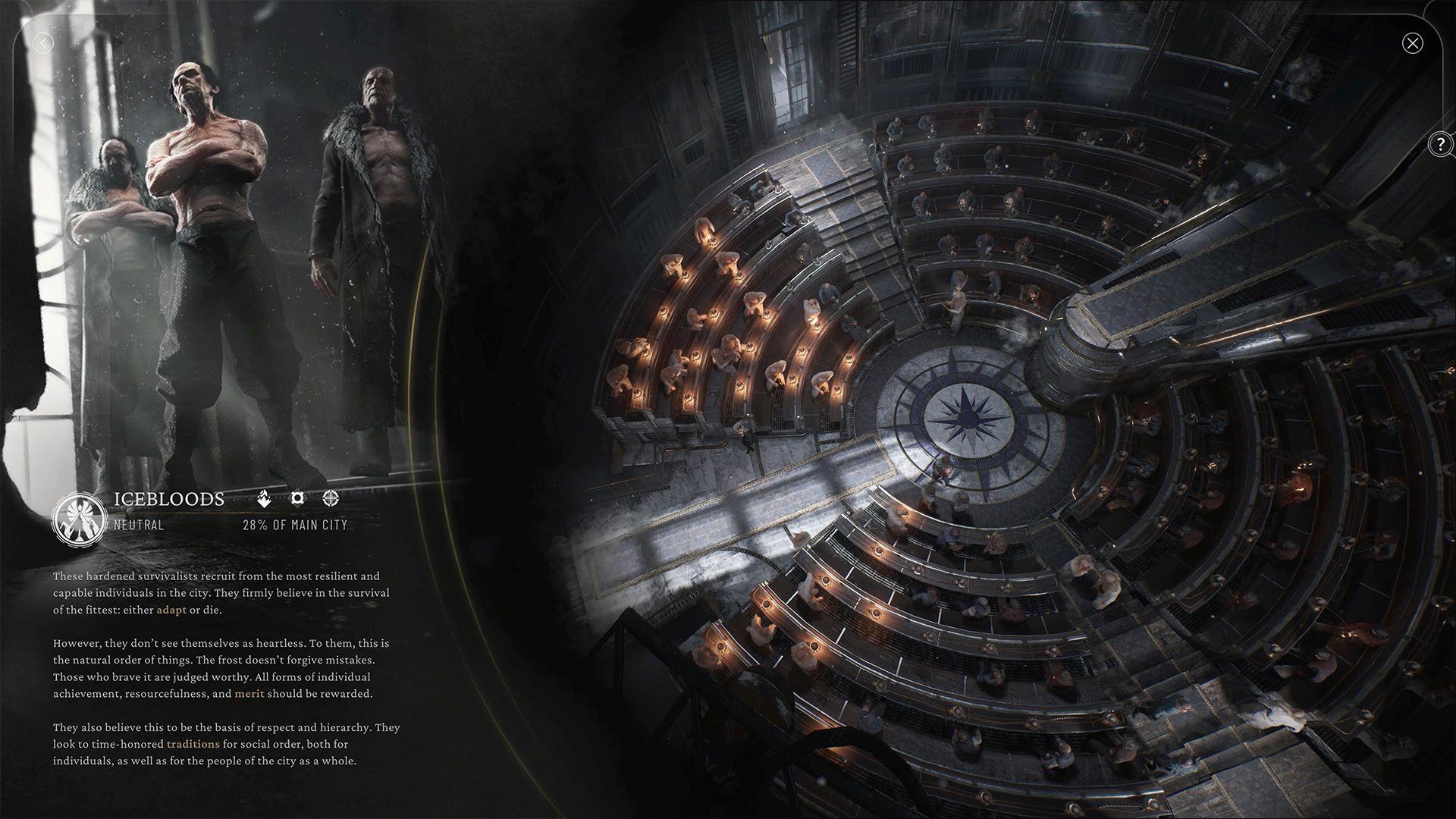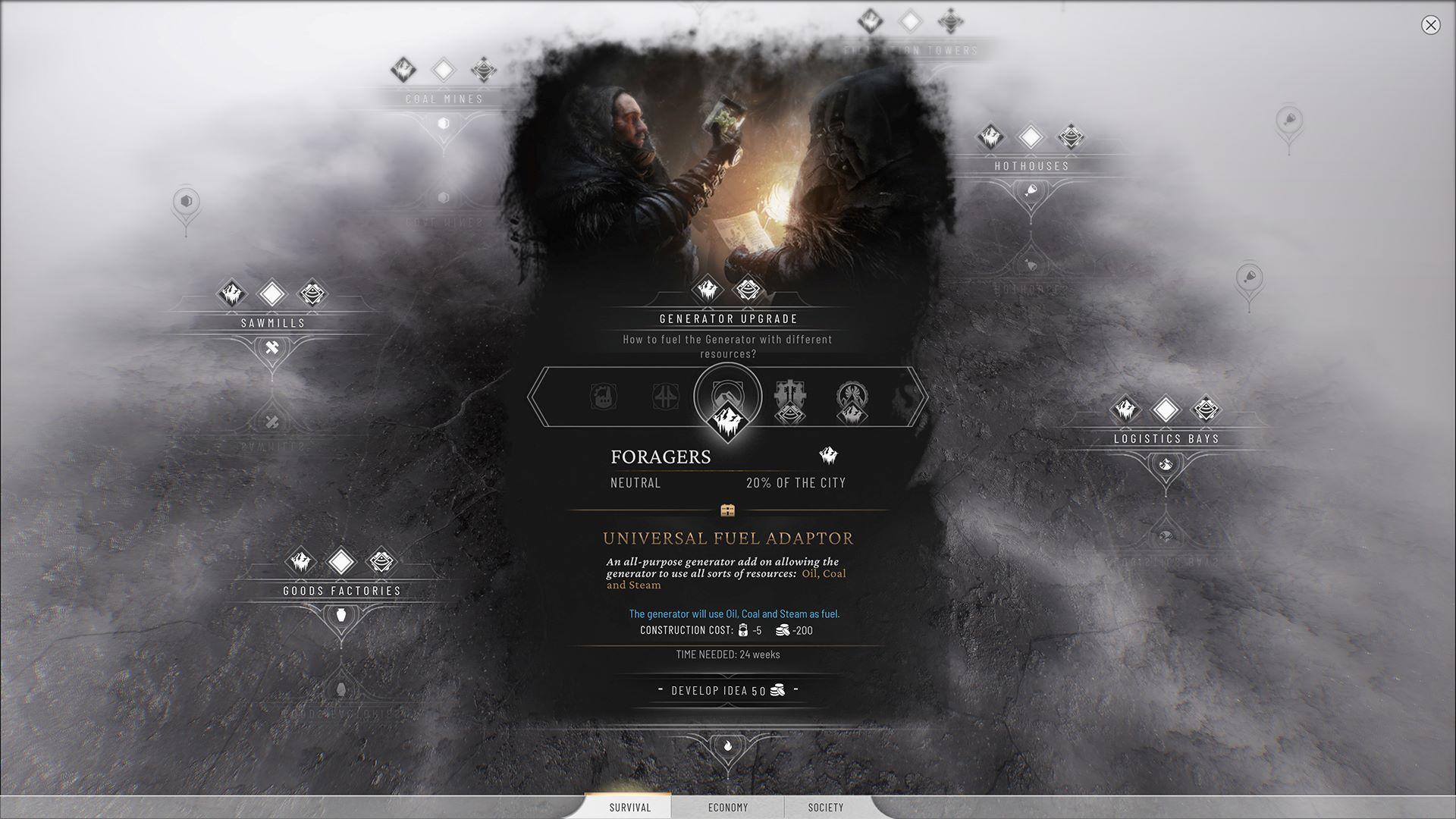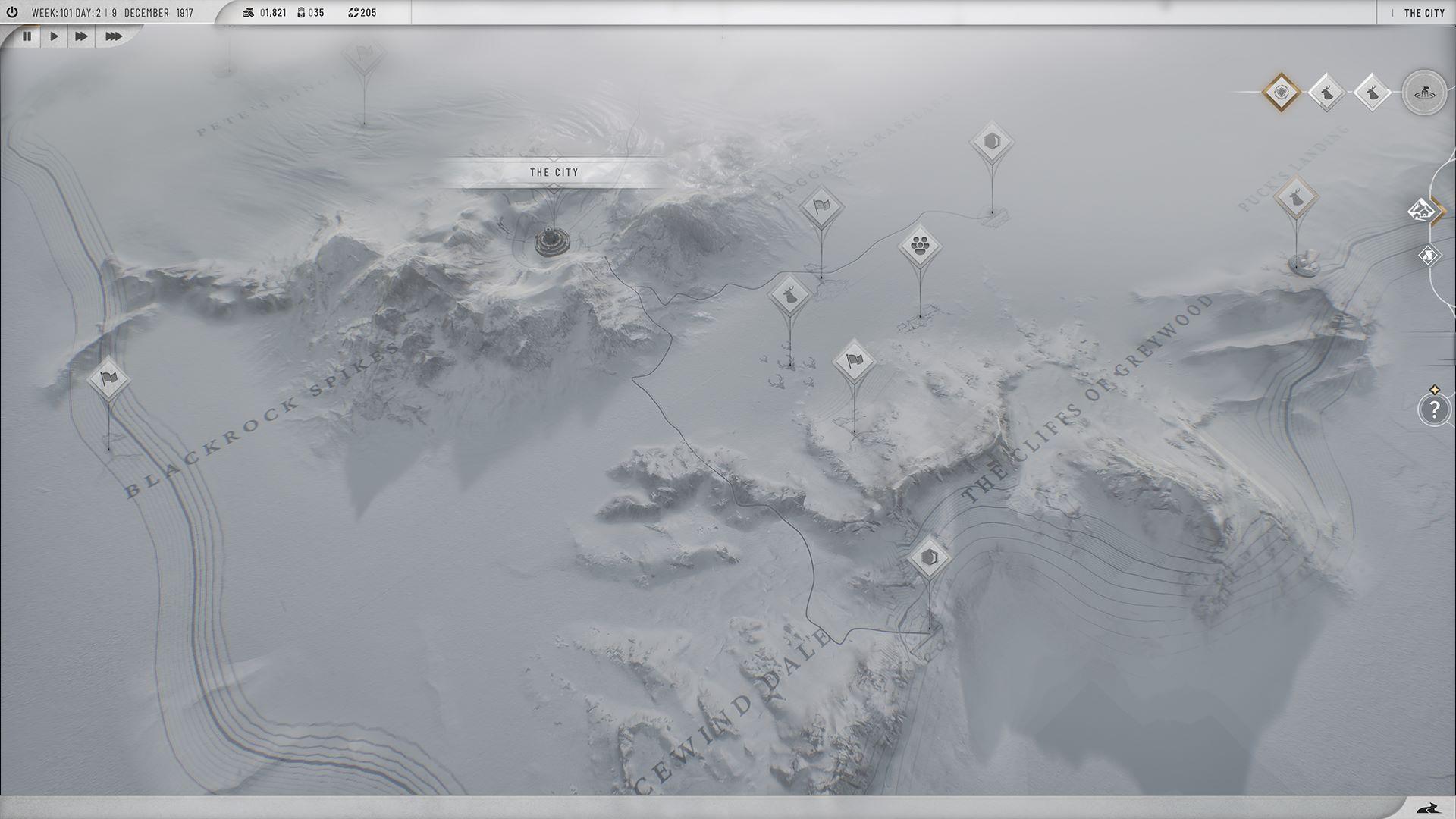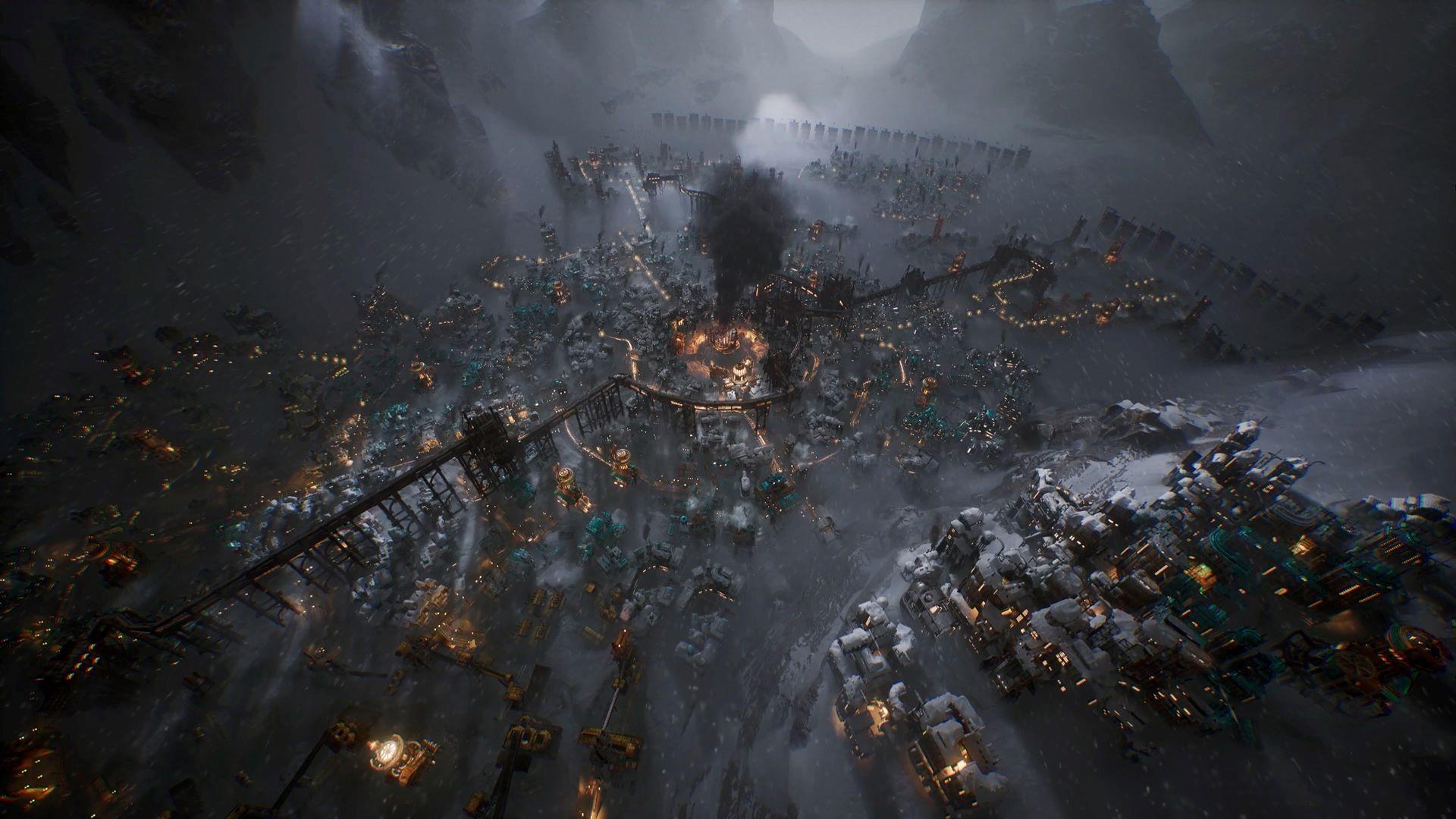Frostpunk 2 takes all the fun and challenge of the original to new levels, while being accessible to all. Here’s our review!
Frostpunk 2
Developed By: 11 Bit Studios
Platforms: PC
Release Date: September 20, 2024
The wait for Frostpunk 2, the sequel to 11 bit studios’ beloved city-builder Frostpunk, is nearly over. Announced back in 2021, it’s been a long wait for New Londoners yearning to get stuck into the next installment in the gaming franchise. The highly anticipated game has already won Best Gameplay at this year’s Gamescom, and after getting our hands on it, we can see why.
30 Years Later, New London’s Survival Is Still Perilous
The main story of Frostpunk 2 takes place 30 years after the first. You’re the new leader of New London, a city of survivors still fighting the cold and looking for ways to sustain their settlement. As the city has grown and citizens have begun to adapt to their new normal, New London has evolved and created new problems that need solving. As the Steward, ensuring the city’s prosperity is up to you.
The story mode is a good way for players to learn and grow accustomed to how the world of Frostpunk 2 works. It seamlessly transitions between each new feature whilst maintaining the intensity players have come to expect from Frostpunk. The tutorial, a prologue before the first part of the story, throws you in head first as you’re tasked with stockpiling 40,000 rations of food in 76 weeks in order to survive the whiteout.
This prologue teaches players how to use the new “frostbreak” mechanic, a feature that allows players to thaw out a wider area to access more resources and continue developing their city, as well as hitting them with their first moral dilemma; do you sacrifice a group of nearby sea lions to boost food rations, or risk working everybody too hard to ensure enough rations are stockpiled?
The main story, much like the prologue, doesn’t go easy on you either. You’re quickly introduced to The Council, a new system where each faction votes on laws before they can be passed. Factions will have their own ideas about whether or not to back the proposed law, but in most cases, they can be negotiated with. Frostpunk 2 wastes no time in ensuring your Stewardship is put to a vote, and tells you in no uncertain terms that failure to secure enough votes will put an end to your story.
The story is engaging and full of highs and lows for your Steward. The 30-year gap between the first game’s story and now really hammers home the precarious situation New London is in, and how the road to create a new civilization is far from over.

Is There Ever a ‘Right’ Decision?
Much like the first game, Frostpunk 2 forces players to make some difficult decisions, often weighing up two bad options and trying to decide which will have the least negative impact. What do you do when a distraught mother wants to be allowed to break quarantine to look after her child who is ill with a highly contagious condition? Do you allow the group of elders who are offering to sacrifice themselves to ensure there are enough food rations for the younger generations to go through with their offer?
The introduction of The Council only adds to this. Players will quickly begin to form an idea of how they want their city to develop, but passing the laws you propose won’t be easy. Each faction has its own ideas on how the city should be run; and there will almost always be some conflict between what each faction wants. Although a faction may initially disagree with your proposals, they can often be negotiated with. This allows the player to persuade them to vote for, or against, a proposal in exchange for the promise of fulfilling one of their wants. These can vary from passing specific laws that align with their ideals, to researching specific technologies and promising to allow them to choose the next proposal to vote on.
Whilst these negotiations make it easier to get your proposal passed through, the factions will hold you to your promises. Failing to fulfill them will lead to a significant decrease in favor and trust in you as a Steward. Completing them will boost the faction’s trust in you. On top of that, players have the option to repeal or replace laws at a later point. But doing so after passing a law you promised a faction you’d pass can result in the faction demanding you revert to the previous law, or you’ll lose a lot of favor and trust.
The Council adds an immersive layer to having to decide on the laws your city follows. Not only are you having to make difficult decisions about what is best for the citizens in your city, but players also have to consider whether a law is worth having to negotiate for. Throughout the game, additional factions will pop up over time, often triggered by disagreements over how the player or other factions are influencing the city. High favor among factions means they’ll set up rallies and provide you with benefits such as extra resources. Conversely, low favor can lead to rebellions.

Relations with each faction can also be impacted by research. Like the first game, Frostpunk 2 has a research building which unlocks a research tree. Most research options present the player with additional options proposed by each faction, all with unique modifiers that may help, or hinder, the citizens of New London. One option may increase squalor but decrease the city’s heat demand, another may decrease disease but increase housing demand. It’s up to the player to decide what’s best for their city and how they want to balance the city’s needs.
Depending on what is researched and implemented, the relations between you and certain factions will increase or decrease. Some factions prefer advancing technology and increasing New London’s dependency on machinery, whilst others prefer citizens learn to adapt to the changes themselves.
The Council is an important place to build relations with certain factions based on the laws you propose and help to pass. But researching particular laws, technologies, and buildings will equally impact how much each faction supports you as a Steward.
The introduction of factions and The Council propels Frostpunk 2‘s strategy gameplay into new territory. No longer are players merely juggling resources alongside citizens’ happiness, they now have to battle with other leaders who may have drastically different ideals to ensure New London prospers.

Frostpunk 2 Is an Improvement in Every Way
The time and attention that has gone into Frostpunk 2 is evident from the moment you start up the game. The game is beautiful, with stunning landscapes and improvements to the menus and UI which all feel smoother and more visually appealing. Despite the intense and at times stressful gameplay, the game is incredibly moreish and balances the difficult whiteouts with the sense of triumph when your city pulls through.
Whether you’re playing Story Mode or Utopia Builder (Frostpunk 2‘s sandbox mode), the game is constantly evolving and throwing new twists and turns to keep players engrossed in the gameplay. The weight of your decisions is felt throughout the time you play, allowing players to immerse themselves in the type of Steward they decide to be.


